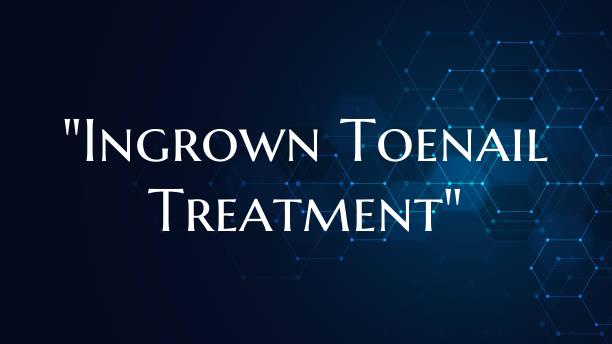
"Ingrown Toenail Treatment"
Ingrown toenails can be an uncomfortable and painful condition that occurs when the edge of the nail grows into the surrounding skin, often leading to redness, swelling, and tenderness. While ingrown toenails can sometimes resolve on their own, proper treatment is essential to prevent infection and alleviate discomfort.
Treatment Options for Ingrown Toenails:
1. Soaking the Foot: Soaking the affected foot in warm water with Epsom salts can help reduce inflammation and soften the surrounding skin, making it easier to gently push the nail away from the skin.
2. Proper Trimming: Trim the nail straight across to prevent it from growing into the skin. Avoid cutting the nails too short or rounding the edges, as this can increase the risk of nail penetration.
3. Footwear: Wear shoes that provide ample space for your toes and avoid tight-fitting footwear that puts pressure on the toes, exacerbating the ingrown toenail.
4. Cotton Wedge: Placing a small piece of cotton under the ingrown edge of the nail can help lift it away from the skin and promote proper growth.
5. Medical Intervention: In severe cases or when home remedies do not provide relief, seeking professional help from a podiatrist is recommended. They may perform a simple procedure to remove the ingrown part of the nail or recommend antibiotics if infection is present.
6. Pain Management: Over-the-counter pain relievers can help manage the discomfort associated with ingrown toenails. Avoid self-treating with sharp objects or attempting "bathroom surgeries," as this can lead to further complications.
Preventing Ingrown Toenails:
- Trim your toenails properly, cutting them straight across. - Avoid wearing tight shoes or socks. - Maintain good foot hygiene by regularly washing and drying your feet. - Be cautious while cutting or filing your nails to prevent accidental injuries.
Ingrown toenails can be a bothersome condition but with proper treatment and prevention strategies, you can alleviate the discomfort and promote healthy nail growth. If you experience persistent pain, redness, or signs of infection, it is crucial to seek professional medical assistance.